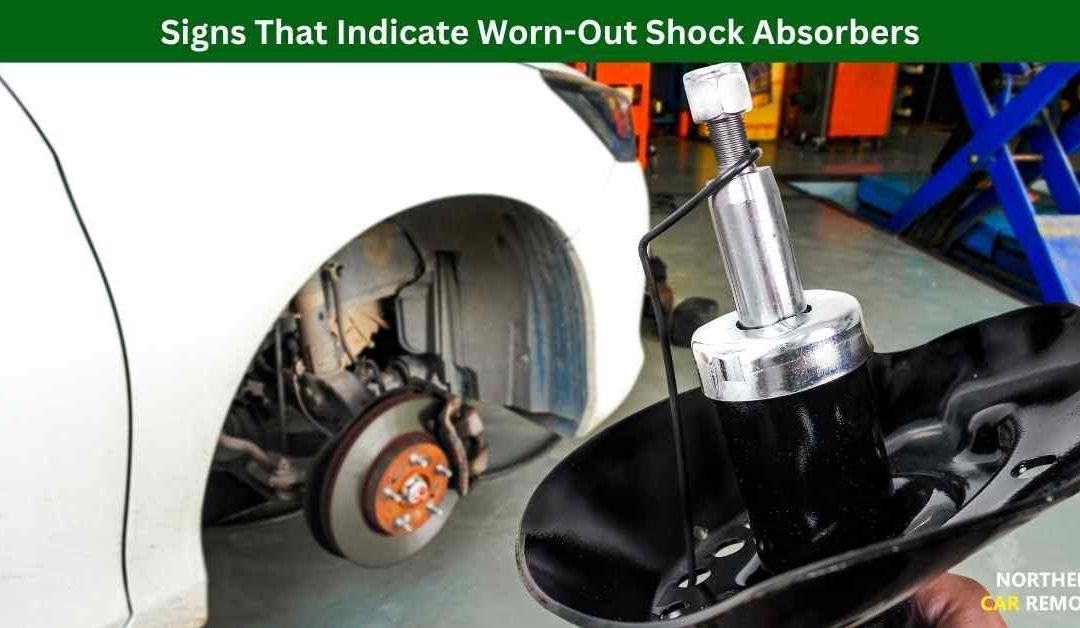Your car’s shock absorbers play a bigger role than most drivers realise. They’re not just about comfort — they’re what keep your tyres firmly on the road, help you stay in control, and make every drive safe and smooth. When shocks wear out, you might start noticing small changes in how your car handles, and if ignored, those small signs can lead to bigger problems.
Knowing what to look for can save you from costly repairs and unsafe driving conditions. Let’s go through the key warning signs that your shock absorbers might be past their best.
What Do Shock Absorbers Actually Do?
Shock absorbers are part of your car’s suspension system. Their job is to control the movement of your springs and keep your tyres in contact with the road. Without them, every bump, pothole, or uneven surface would make your car bounce like a trampoline.
In short, they help:
- Maintain vehicle stability while driving.
- Reduce bouncing and vibrations.
- Improve braking and steering control.
- Keep tyre wear even and consistent.
When shocks wear out, all these functions start to suffer — and your car’s overall safety drops.
How Can You Tell If Your Shock Absorbers Are Worn?
Worn shocks show themselves in subtle ways at first, but the symptoms become more obvious over time. Here are the most common signs:
1. Your Car Feels Bouncy or Uneven
One of the easiest signs to notice is excessive bouncing. If your car keeps bouncing after going over a bump or dip, it means the shocks aren’t absorbing movement properly. Try this simple test: push down on the bonnet or boot — if it bounces more than once or twice after you let go, your shocks could be worn.
2. Nose Diving or Rear Squatting When Braking or Accelerating
When you brake suddenly and the front of your car dips sharply forward, that’s called nose diving. Similarly, if the rear squats down during acceleration, your rear shocks might be weak. These are clear indicators that your suspension isn’t controlling weight transfer properly.
This issue doesn’t just make driving uncomfortable — it increases braking distance and can make your car unstable in emergencies.
3. Uneven Tyre Wear
If you’ve noticed bald spots or uneven tread patterns on your tyres, it could be due to failing shock absorbers. When shocks don’t hold the tyres firmly to the road, they bounce and skip, wearing the tread unevenly. Replacing tyres without fixing the shocks will only waste money — the new ones will wear out just as fast.
4. Steering Feels Loose or Unstable
When shocks lose effectiveness, your car can feel less steady around corners or at higher speeds. You might feel like you’re constantly correcting the steering to stay straight, especially on rough or uneven roads. This “floaty” or drifting sensation is a clear sign your suspension isn’t doing its job.
5. Fluid Leaks Around the Shock or Strut
Shock absorbers contain hydraulic fluid that helps control motion. If you notice oily residue or wet patches near your shocks or struts, it likely means the seals are leaking. Once fluid leaks out, the shocks can’t dampen movement properly, and performance drops sharply.
Leaking shocks should be replaced as soon as possible to avoid further damage to the suspension.
6. Rattling or Knocking Noises
Hearing unusual noises when driving over bumps? That could be worn-out shocks or mounts. Over time, internal components and bushings wear down, causing clunks or rattles. These sounds are more than annoying — they’re a warning sign that your suspension is under stress.
7. Longer Stopping Distances
Bad shocks can increase your stopping distance by up to 20%. That’s because they affect how evenly the tyres stay in contact with the road during braking. In wet or slippery conditions, that extra distance can make the difference between stopping safely and sliding into trouble.
When Should You Replace Your Shock Absorbers?
Most shock absorbers last between 80,000 and 100,000 kilometres, but that depends on your driving habits and road conditions. If you regularly drive on rough roads or carry heavy loads, they might wear out sooner.
If you notice any of the above signs — especially uneven tyre wear, bouncing, or nose diving — it’s worth getting your suspension checked by a mechanic. They can inspect all components and replace shocks in pairs (front or rear) for balanced handling.
Can You Drive With Worn Shock Absorbers?
Technically, yes — but it’s not safe. Driving with worn shocks increases your risk of losing control, especially when braking suddenly or turning sharply. It also makes your tyres wear out faster and can strain other suspension parts.
Fixing the issue early keeps your car safe, comfortable, and reliable. It’s one of those repairs that pays off in the long run.
Shock absorbers might not be the most talked-about car part, but they’re essential for keeping your vehicle stable, smooth, and safe. If your ride feels bumpier than usual or your car just doesn’t handle like it used to, don’t ignore the signs. Getting your shocks checked or replaced right away ensures your car stays in top condition — and your drives stay as safe and comfortable as they should be.
If you are in Bulla, and looking to sell your car, this is the best way to find us.
1/26 Acacia St, Glenroy VIC 3046
0437 773 905


Recent Comments